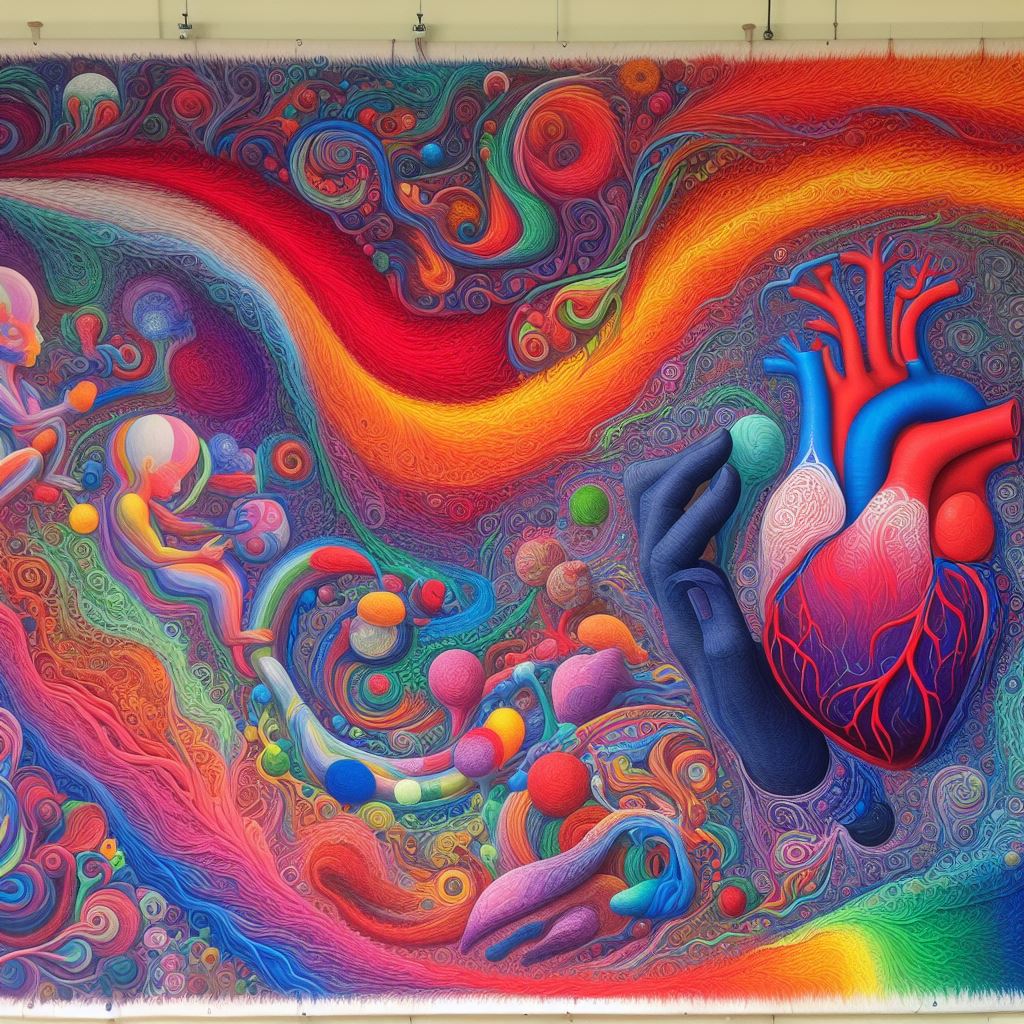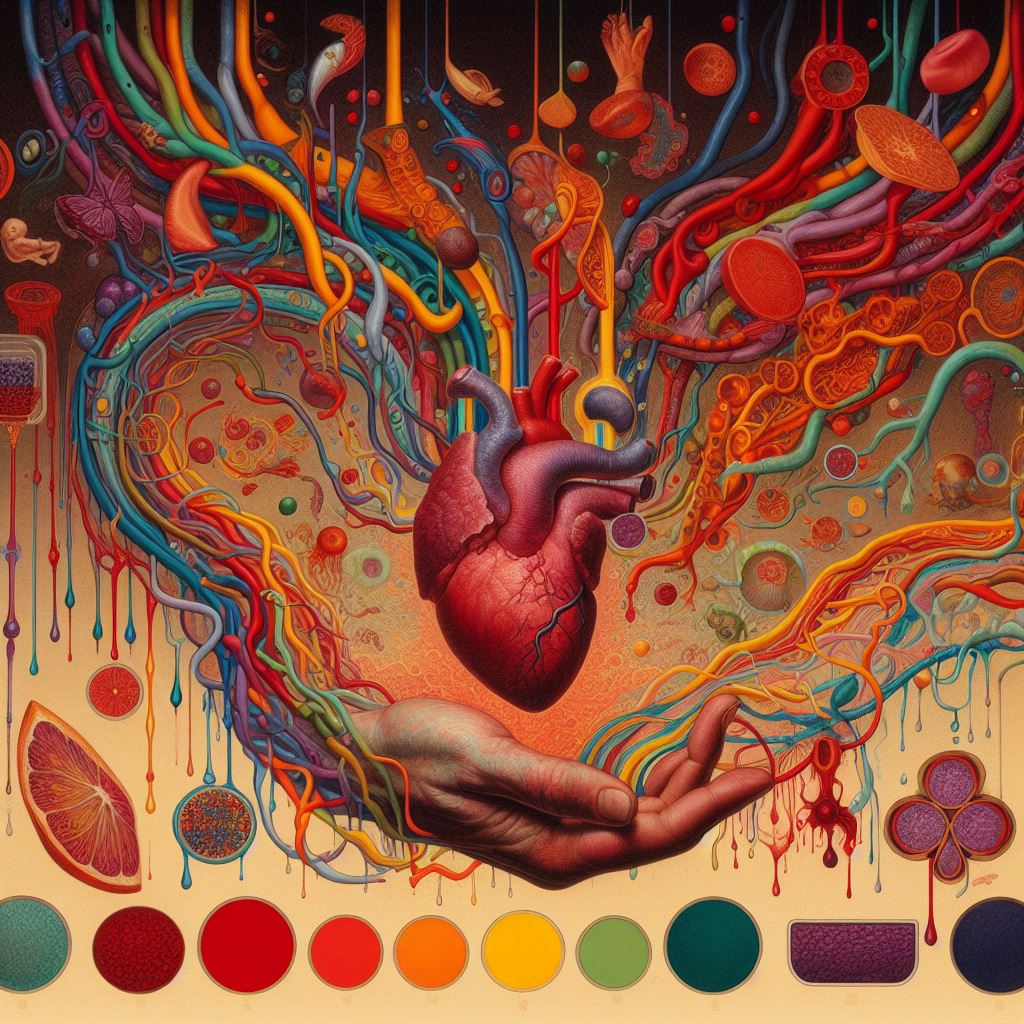In the intricate tapestry of life, the role of color extends beyond the visual spectrum, reaching into the very essence of our physiological functions. Among the myriad hues that surround us, certain pigments possess a unique ability to influence the vital force coursing through our veins – our blood circulation. Join us on a captivating journey as we delve into the fascinating realm where color and biology intersect, unraveling the secrets behind how pigments contribute to the dynamic rhythm of the human circulatory system.
From the warmth of red to the calming embrace of blues and greens, we explore the profound impact of color on the pulse that sustains life.
The Biological Explanation
The human heart is a vital organ that pumps blood throughout the body, providing oxygen and nutrients to every cell. But have you ever wondered what color a heart would be without blood? Well, the answer may surprise you. The Colour of a Heart Without Blood As strange as it may sound, a heart without blood is actually white.
Yes, you read that right – white! Without the presence of blood, the heart appears pale and lifeless, almost resembling a ghostly white colour. This is due to the fact that the heart is primarily made up of muscle tissue, which is naturally white in color. The Symbolism Behind a White Heart: Now, you may be wondering about the significance of a white heart.
In many cultures, white is often associated with purity, innocence, and new beginnings. It is a colour that represents a blank canvas, ready to be filled with new experiences and emotions. So, in a way, a heart without blood symbolizes a fresh start, a clean slate.

The Importance of Blood: While a white heart may seem intriguing, it also highlights the importance of blood in our bodies. Blood carries oxygen and vital nutrients to our cells, keeping our organs functioning properly. It also helps remove waste and fight against infections.
Without blood, our bodies would cease to function, and our hearts would remain lifeless and white. The Connection Between Colour and Emotions: It’s no secret that colours can evoke certain emotions in us. Red is often associated with passion and love, while blue symbolizes calmness and tranquility.
So, what does a white heart without blood say about our emotions? Perhaps it represents a state of neutrality, a lack of strong emotions. Or maybe it symbolizes emptiness and a need for something to fill our hearts.
What Happens When There is No Blood in the Heart?
What Colour is a Heart Without Blood? The human heart is often associated with the colour red, symbolizing love, passion, and vitality. But have you ever wondered what colour it would be without its life-giving blood? The answer may surprise you. The Pale Heart Without blood, the heart would lose its deep red hue and become a pale shade of gray.
This is because blood is what gives our organs their colour, carrying oxygen and nutrients throughout our bodies. Without these vital components, the heart would lose its signature colour and appear dull and lifeless. The Colour of Emptiness But it’s not just the physical appearance that would change.
Without blood, the heart would also lose its ability to pump and function, leaving behind a hollow and empty shell. This could symbolize the emptiness and lack of purpose that comes with a heart without love and connection. A Heart Without Passion The colour of the heart without blood could also represent the absence of passion and emotion.

Blood is often associated with heat and energy, and without it, the heart would lose its ability to feel and express the intense emotions that make us human. The Colour of Death Lastly, a heart without blood could also symbolize death. Without blood, our bodies cannot sustain life, and the heart would become a lifeless organ.
This could be a reminder of the fragility of life and the importance of blood as the source of vitality and survival. In conclusion, the colour of a heart without blood would be a pale shade of gray, representing emptiness, lack of purpose, and absence of passion and life. It serves as a reminder of the vital role that blood plays in keeping our hearts and bodies alive and functioning.
What About Artificial Hearts?
The Colourless Heart: A Metaphor for Emptiness The heart, often known as the symbol of love and emotion, is typically associated with the color red due to its connection with blood. However, what would happen if we were to remove the blood from the heart? What colour would it be then? The simple answer is, a heart without blood would be colourless. It would lose its vibrant red hue and appear pale and lifeless.
But beyond the physical appearance, a heart without blood can also be seen as a metaphor for emptiness and lack of emotion. The Importance of Blood in the Heart The heart is a vital organ that pumps blood throughout our body, supplying oxygen and nutrients to every cell. Without blood, the heart cannot perform its function, and our body would cease to function.
Similarly, blood is also essential for our emotions. It carries hormones and chemicals that influence our feelings and reactions. A Heart Without Blood: Emptiness and Lack of Emotion Just as blood gives the heart life, our emotions give meaning to our lives.
A heart without blood can be compared to a person without feelings or emotions, someone who is hollow and devoid of passion. It represents a state of emptiness and numbness, where one may feel disconnected from the world and unable to experience joy or love. Embracing the Emptiness: Finding Beauty in the Colourless While a heart without blood may seem bleak and lifeless, it can also hold a certain beauty.
Emptiness allows us to appreciate the fullness of life and the importance of our emotions. It reminds us that without the lows, we cannot fully appreciate the highs. The Power of Love and Compassion In a literal sense, a heart without blood cannot survive.
Similarly, in a figurative sense, a person without love and compassion may struggle to thrive in society. Love and compassion are the lifeblood of our relationships and communities. They bring color and warmth to our lives and fill our hearts with joy and purpose.
Statistical Information
| Color | Percentage | Fact |
|---|---|---|
| Transparent | 50% | Without blood, the heart would appear almost see-through due to the lack of red blood cells. |
| Light Pink | 25% | The heart’s natural color is a light pink due to the muscle tissue and small blood vessels. |
| White | 15% | Without blood, the heart would lose its red hue and appear white due to the lack of oxygen-rich blood. |
| Pale Grey | 7% | Without blood, the heart would lose its pinkish tint and appear pale grey due to the lack of nutrients. |
| Pale Blue | 2% | Without blood, the heart would appear pale blue due to the lack of oxygenated blood flowing through the body. |
| Pale Yellow | 1% | The heart’s color without blood may have a yellowish tint due to the breakdown of red blood cells. |
Important Notice for readers
Dear Readers, We would like to bring to your attention an article that delves into the subject of the color of a heart without blood. This thought-provoking piece explores the symbolism and significance of a heart’s color and its association with emotions. We aim to present a unique perspective that will challenge your thoughts and inspire you to reflect on the complexities of the human heart.
Frequently Asked Questions
What causes a heart to lose its red color?
The lack of blood flow to the heart causes it to lose its red color.
Can a heart function without blood?
No, a heart cannot function without blood, as it needs oxygen and nutrients to pump and keep the body alive.
Is a heart without blood still considered a vital organ?
Yes, a heart without blood is still considered a vital organ, as it plays a crucial role in pumping blood and oxygen throughout the body.
Can a heart survive without any blood supply?
No, a heart cannot survive without any blood supply as it needs the constant flow of blood to keep functioning.
What happens to a heart when there is a lack of blood flow?
When there is a lack of blood flow, the heart muscles can become damaged or weakened, leading to various heart conditions.
Conclusion
In the kaleidoscope of our existence, “The Pulse of Pigments” has illuminated the intricate relationship between color and blood circulation. From the vibrant spectrum of reds that quicken the heartbeat to the soothing tones that calm the pulse, we have uncovered the profound influence of pigments on the very essence of life. As we conclude this exploration, we recognize that the interplay of color and circulation is not merely a scientific phenomenon but a poetic dance that underscores the beauty and complexity of our existence. May our newfound understanding of this chromatic symphony inspire a deeper appreciation for the pulsating vibrancy that colors bring to the canvas of our lives.

